For many years now, information has been circulating on the Internet that one of Studio Ghibli's cutest films has a sinister undertone. We checked whether there is any basis for this statement.
Most often, the theory about the hidden meaning of “Totoro” is told with reference to a conversation with a Japanese resident who assures the interlocutor that this cartoon is very scary. Next, the narrator’s monologue is conveyed, in which he says: “In the area about which the cartoon is about, long before the filming of the film, a terrible story happened - a maniac killed children in the forest.”
According to the narrator, many details indicate that this happened to the heroines of Totoro: “Remember when grandma and Satsuki found a sandal in the pond? May died, you know? And Satsuki went to look for her and died herself. <…> Then, when Satsuki gets on the Kotobus, the inscription on his forehead changes. Everything happens there very quickly, and at the end it turns out to be "Destination: May", and before that the destination was a cemetery. <…> And also, when Mei is found, she sits in such a holy place where stone Buddhas stand. Religious Japanese believe that when a person dies, he becomes a Buddha. And there should be seven Buddhas in a holy place. And there it is six, and May is sitting. She is already a Buddha, you see.” And finally, the main sign is that the last ten minutes of the film the girls do not cast shadows.
This story appears on various entertaining websites And forums, she popular in "VKontakte", LiveJournal And Facebook. Some sources link the film not to an abstract maniac who killed children in the forest, but to a specific murder that occurred in the 1960s, known as the Sayama Incident. Roller on YouTube discussing this theory received 480,000 views.
The full-length animated film My Neighbor Totoro, directed by Hayao Miyazaki, was released in 1988. It tells the story of two sisters: Satsuki and Mei, who together with their father moved to an old house in a village not far from the hospital where their mother is being treated for tuberculosis. The girls accidentally meet the guardian of the forest, a furry giant spirit named Totoro, and other supernatural creatures who often come to their aid. At the same time, adults do not see or hear Totoro and other spirits - they can only sometimes feel their presence nearby or remember how they saw something similar in childhood.
As Miyazaki himself writes in the art book about the creation of Totoro, the anime takes place in the 1950s in the city of Tokorozawa, Saitama Prefecture, not far from Tokyo. The director himself lived there as a child, and Totoro is largely based on his memories. It was the location of the action that became the basis for speculation. Internet users associated the cartoon with the so-called Sayama incident - the brutal murder of a schoolgirl, which occurred in May 1963 in the city of Sayama (about 9 km from the scene of Totoro). The case went down in history, not as an example of an unusually bloodthirsty murder, but because the man who was charged insisted on his innocence for decades. The arrested man's name is Kazuo Ishikawa, he burakumin, that is, a person from the untouchable caste. The caste system in Japan was abolished in 1871, but the Burakumin are still subjected to discrimination. An example of such an attitude towards this social group counts and the Sayama Incident. Ishikawa initially admitted his guilt, but later claimed that the police forced him to do it. No convincing evidence of his guilt was presented to the court. Nevertheless, Ishikawa was sentenced to life imprisonment. He was released early in 1994, and continued fight for your good name. At the time of writing this analysis, the next review of the case is still was not completed.
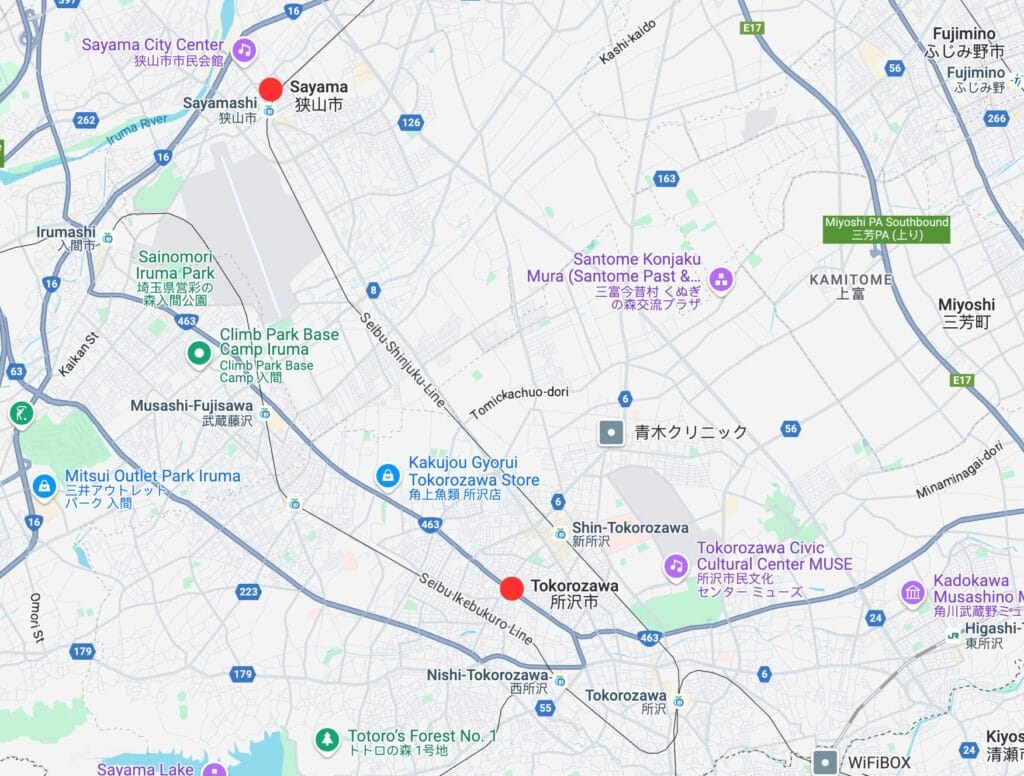
Geography is the only thing that somehow unites the film and the Sayama Incident. The crime occurred much later than the events in Totoro. The 16-year-old victim was the fourth child in the family, while in Miyazaki's film there are only two sisters and they are ten and four years old. Moreover, initially Miyazaki planned that the heroine would be alone, but later decided that two characters of different ages would be more interesting to the audience - they would see two different perceptions of the world. In addition, it gave the director the opportunity to remember his own relationship with his brother. He also took the story of the illness of Satsuki and Mei’s mother from his own biography: Miyazaki’s mother suffered from tuberculosis during his childhood and spent a lot of time in hospitals for several years (she eventually recovered and lived a long life).
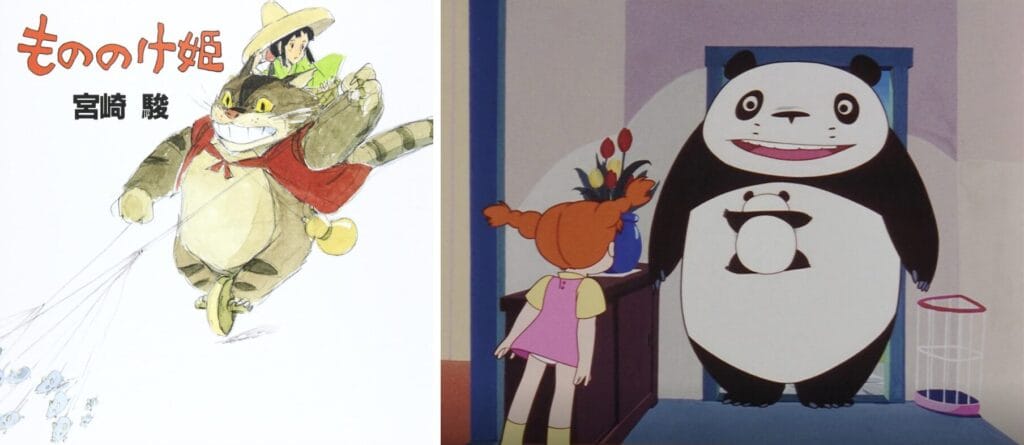
Totoro himself has nothing to do with Japanese mythology; he is a completely fictional character. In 1980, Miyazaki came up with the idea for the filmPrincess Mononoke" - the story of a princess who had to marry an evil spirit (this is how “mononoke” is translated from Japanese). The studio decided not to pursue this idea (later the anime "Princess Mononoke"was filmed anyway, but the plot is different), but in 1983 Miyazaki published the story in the form of a short illustrated children's books. Miyazaki later used the appearance of the then invented spirit Mononoke to create the image of Totoro.
The forest spirit borrowed its character and habits from another creation of Studio Ghibli - Panda Daddy from the anime "Panda big and small" Gael Burton in the book "Universe of Hayao Miyazaki“calls “Panda” a draft of “Totoro”: “Externally, Papa Panda looks like Totoro - they even have the same smile and gait! Pan clings to his daddy's belly at the beginning of the film the way girls and little Totoros cling to their patron. Mimiko is very similar in appearance to Mei, although her behavior is more reminiscent of Satsuki. <…> Many episodes in the two films overlap with each other, for example the one where Pan accompanies Mimiko to school - Mei also accompanies Satsuki to study. But the most striking crossover is the policeman riding a bicycle in the first Pandas movie - on the same bicycle in a comically similar pose as at the very beginning of My Neighbor Totoro.
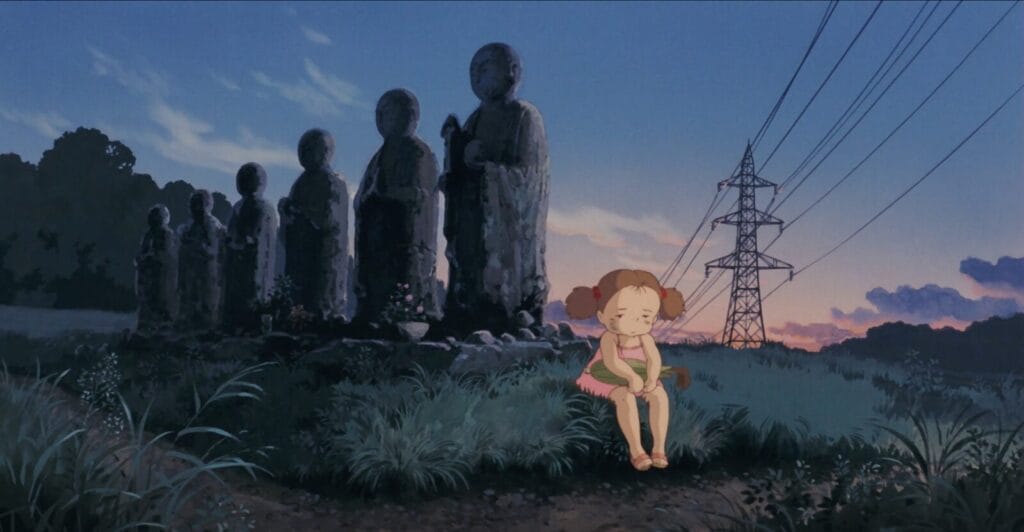
Other details that Internet users pay attention to do not actually have sinister overtones either. So, the statues next to which the lost May sits do indeed have a symbolic meaning, but a different one. These are not Buddhas, as the viral text says, but Jizo Bodhisattvas. Bodhisattvas in Buddhism they call monks who have achieved enlightenment, but did not go to nirvana, in order to continue helping all living beings. Their role is somewhat similar to the role of saints in Christianity. Jizo is indeed known as a conductor of the souls of the dead, but his role is no less important patron saint of children - and in this case we are shown that May is under his protection. By the way, Jizo also appears in the first part of the film, when the girls, fleeing the rain, take refuge in a small Buddhist temple. The sandal that is pulled out of the pond is not Mei's (and Satsuki says so). And on the Kotobus board there is not only a cemetery - there are many different directions changing there until the right one is highlighted.
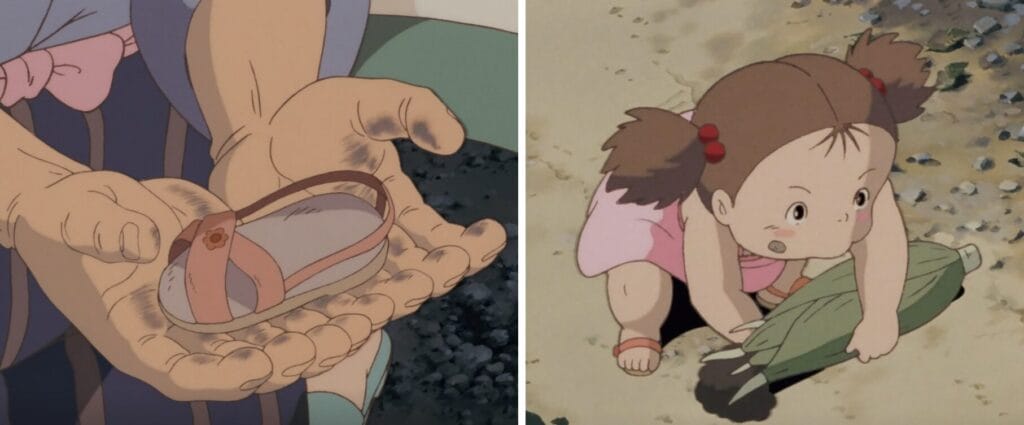
Nevertheless, there is some truth in the viral text - the story about the dark subtext of "Totoro" is indeed of Japanese origin. Susan Napier in the bookThe magical worlds of Hayao Miyazaki" suggests that the legend is based on an idea voiced by Miyazaki scholar Masashi Shimizu in 2001. "Shimizu claims that the real inspiration for the film was the classic fantasy novel Night Train to the Stars by Kenji Miyazawa, one of Miyazaki's favorite writers," Napier writes. “In this thrilling story, two little boys, Giovanni and Campanella, go on a surreal train adventure across the galaxy, only to discover that Campanella drowned before the journey began and Giovanni was accompanied by his ghost the entire time.” Earliest surviving discussion of the theory on the Internet can be found on the 2channel forum, it is dated November 2006. But this is clearly not the very first mention - on the forum the story is discussed as fairly well known by that time. One user writes: “Sometimes they say that Mae's shadow is missing, or that their father's distant look is a clue, or that they moved there because the children died - there are many similar stories. They also say that one of the friends of friends once contacted Ghibli and they were told: “How did you guess?”
However, that's not really how Ghibli responded. On May 1, 2007, the studio’s official blog appeared fast, which said they were getting a lot of calls asking, “Is it true that Totoro is the god of death?” “We would like to assure everyone: there is no talk of any god of death or the fact that May is dead in the film My Neighbor Totoro. This is just one of the modern urban legends. Someone, apparently for fun, came up with this story, and it instantly spread across the Internet. For example, the statement that Satsuki and Mei have no shadows at the end of the film is solely due to the fact that, from an animation perspective, it was decided not to draw them as an unnecessary detail. We ask everyone not to believe such rumors.”
Despite this, rumors continued to spread - not only in Japan, but also abroad. outside. Gael Berton writes that in 2015, Ghibli co-founder and producer Toshio Suzuki was again asked about the hidden meaning of Totoro in an interview with Tokyo FM. He once again stated that this was not true and referred all doubters to the 2007 refutation.
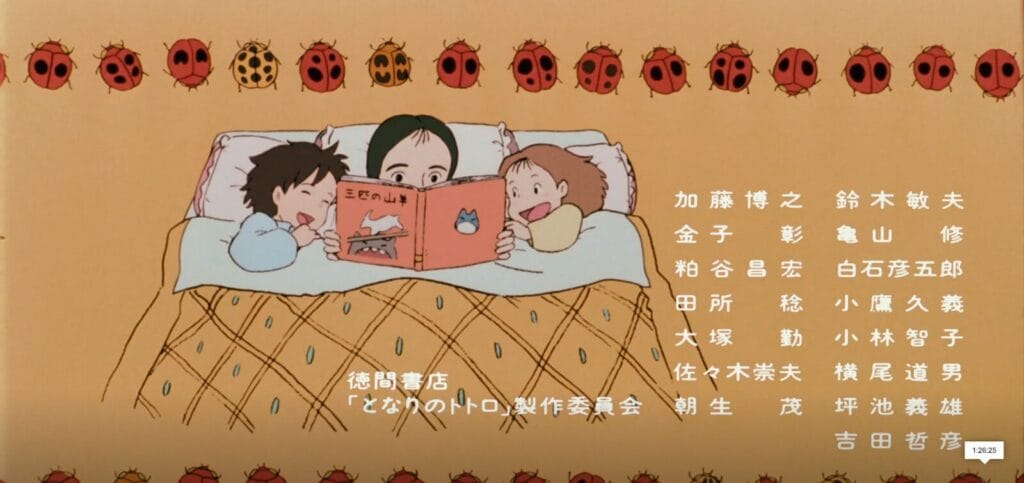
Thus, Studio Ghibli officially denies the theory that the heroines of the anime “My Neighbor Totoro” are actually dead. This is just an interpretation of one of the researchers of the work of Hayao Miyazaki, which has spread on the Internet and has acquired numerous details.
Cover photo: frame from the cartoon “My Neighbor Totoro”
Read on topic:
- Arzamas. "Hayao Miyazaki: how to start watching his films»
- Is it true that the Tokyo subway launched a train in the shape of Kotobus from the anime “My Neighbor Totoro”?
- Is it true that the photo shows a real prototype of Popeye the Sailor Man?
- Is it true that watching cartoons has a negative impact on the psyche of preschool children?
If you find a spelling or grammatical error, please let us know by highlighting the error text and clicking Ctrl+Enter.






